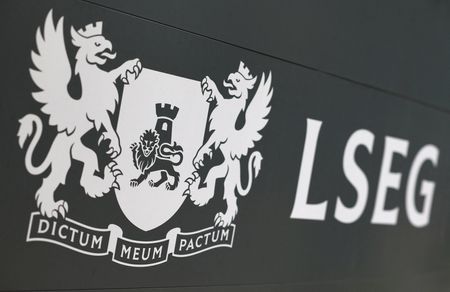By Lucia Mutikani
WASHINGTON (Reuters) -U.S. job openings unexpectedly increased in November while hiring softened, suggesting the labor market continued to slow at a pace that probably does not require the Federal Reserve to be in a rush to cut interest rates.
The Job Openings and Labor Turnover Survey, or JOLTS report, from the Labor Department on Tuesday also showed layoffs remained low and workers were reluctant to quit their jobs.
There were 1.13 job openings for every unemployed person, up from 1.12 in October. The vacancies-to-unemployed ratio is just below its average of 1.2 before the COVID-19 pandemic. It was 1.43 a year ago. The U.S. central bank reduced rates last month for the third straight time since it kicked off its easing cycle in September, but projected fewer cuts this year.
“There is no signal here of any sudden collapse of the labor market here or imminent recession,” said Carl Weinberg, chief economist at High Frequency Economics. “Instead, these data signal the economy is nearing full employment, not moving away from it. The Fed will find no cause to rush to cut rates, the labor market does not need it.”
Job openings, a measure of labor demand, were up 259,000 to 8.098 million by the last day of November, the Labor Department’s Bureau of Labor Statistics said. Data for October was revised higher to show 7.839 million vacancies instead of the previously reported 7.744 million. Economists polled by Reuters had forecast 7.70 million unfilled positions.
The rise in job openings occurred across the board, though it was mostly concentrated among small businesses. Vacancies increased 273,000 in the professional and business services. There were an additional 105,000 open positions in finance and insurance, while unfilled jobs rose 38,000 in private educational services.
But vacancies decreased by 89,000 in the information industry. The job openings rate rose to 4.8% from 4.7% in October.
Employers, however, remained hesitant to add more workers after a hiring spree during the recovery from the pandemic. Economists speculated businesses could be hugging the sidelines, waiting to see how policies from President-elect Donald Trump’s incoming administration would unfold. Trump has pledged to cut taxes, but also to impose or massively raise tariffs on imports and deport millions of undocumented immigrants.
Hires dropped by 125,000 to 5.269 million. The decline occurred mostly among businesses with one to nine employees and those with 50 to 249 workers. There were significant declines in professional and business services and manufacturing hiring. The hires rate dipped to 3.3% from 3.4% in October.
Job growth likely slowed in December as the boost from the end of disruptions from hurricanes and strikes by factory workers at Boeing and another aerospace company faded.
Nonfarm payrolls likely increased by 160,000 jobs in December after surging by 227,000 in November, a Reuters survey showed. The unemployment rate is forecast to be unchanged at 4.2%.
“Business leaders are going to navigate the economic environment with caution until it becomes clear how they need to adjust their headcounts,” said Oren Klachkin, financial market economist at Nationwide.
Stocks on Wall Street were trading lower. The dollar gained versus a basket of currencies. U.S. Treasury yields rose.
LOW LAYOFFS
Layoffs were little changed at 1.765 million in November, though job cuts jumped 102,000 in the accommodation and food services industry. Low layoffs are anchoring the labor market and broader economy.
Workers are staying put in their jobs, with the number of quits declining by 218,000, which bodes well for wage price pressures and overall inflation. But inflation embers continue to burn.
A survey from Institute for Supply Management (ISM) on Tuesday showed its measure of prices paid for inputs by services businesses surged to near a two-year high in December.
This data underscored the U.S. central bank’s projection last month of only two rate cuts this year compared to the four it had forecast in September.
The Fed lowered its benchmark overnight interest rate by 25 basis points to the 4.25%-4.50% range at its Dec. 17-18 policy meeting. The policy rate was hiked by 5.25 percentage points in 2022 and 2023 to quell inflation.
Though hopes for tax cuts and a less stringent regulatory environment helped to lift the ISM’s non-manufacturing purchasing managers index to 54.1 in December from 52.1 in November, anecdotes from businesses showed growing worries about tariffs.
Some accommodation and food services providers said they were making preparations to diversify supply in anticipation of tariffs. Construction businesses reported that “tariff threats from (the) incoming administration have been making suppliers reluctant to hold pricing for more than one year.”
In the information sector, businesses said they were “concerned about tariff activity and are hoping for the best,” while their counterparts in the transportation and industry reported “a lot of uncertainty about tariffs and purchasing decisions.”
Fears about higher tariffs likely fueled the 3.4% jump in imports in November reported by the Commerce Department’s Bureau of Economic Analysis on Tuesday. Imports totaled $351.6 billion.
That rise eclipsed a 2.7% advance in exports to a record high of $273.4 billion. As a result, the trade deficit widened by 6.2% to $78.2 billion in November.
“There is evidence that importers are bringing in more goods to stockpile before Trump 2.0 gets fully up and running,” said Christopher Rupkey, chief economist at FWDBONDS. “The Trump administration will certainly have their hands full if they truly wish to turn back the clock more than twenty years ago when the U.S. was a world leader in manufacturing.”
(Reporting by Lucia Mutikani; Editing by Chizu Nomiyama and Paul Simao)











